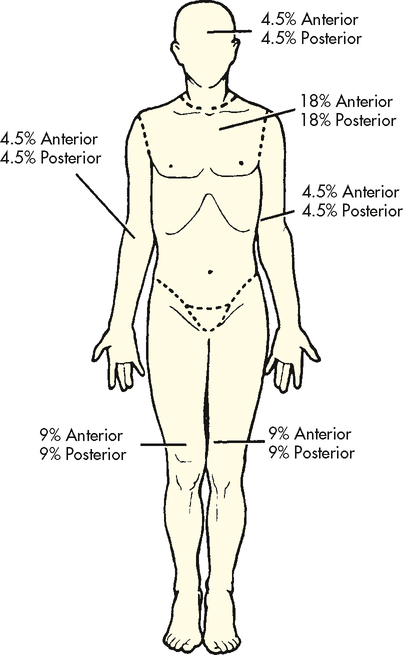CHAPTER 5 After reviewing this chapter, you should be able to: 2. Convert percents to fractions 3. Convert percents to decimals 5. Convert decimals to percents 6. Convert fractions to percents 7. Convert fractions to ratios Percentage is a commonly used word. Sales tax is a percentage of the sale price; a final examination is a certain percentage of the final grade; interest on a home mortgage represents a percentage of the balance owed; interest on a savings account is expressed as a percentage. Health care professionals see percentages written with medications (e.g., magnesium sulfate 50%). In addition to its use with medications, percentage is also used in the assessment of burns. The size of a burn (percentage of injured skin) is determined by using the rule of nines in an adult (Figure 5-1). The basis of the rule is that the body is divided into anatomical sections, each of which represents 9% or a multiple of 9% of the total body surface area. The total body surface area (BSA) is represented by 100%. Another method used is the age-specific burn diagram or chart. Burn size is expressed as a percentage of the total BSA. In children, age-related charts are used because their body proportions differ from those of an adult and the rule of nines cannot be applied.
Percentages
Get Clinical Tree app for offline access



 Practice Problems
Practice Problems

 Practice Problems
Practice Problems

 Practice Problems
Practice Problems

 Practice Problems
Practice Problems

